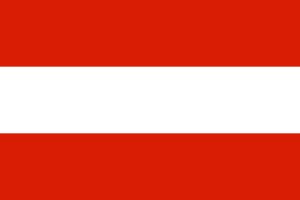Includes historical data for Austria‘s Gross Domestic Product growth, debt-to-GDP ratio and more, as well as information on trade, banking and financial sector leadership.
A Strong, Diversified Economy
Austria boasts a high standard of living, a highly skilled workforce, and a diversified economy with strong service, industrial and agricultural sectors. These strengths are enhanced by stable political and social institutions, excellent infrastructure, and a transparent and competitive business environment. Furthermore, Austria benefits from its strategic location between Western European powerhouses and high-growth markets in Central, Eastern and Southeastern Europe.
Weaknesses include: high tax burdens and complex regulations, an aging population, a high exposure to refugee and migration fluxes, and an economy heavily reliant on the neighboring countries—particularly Germany—making it vulnerable to external shocks.
Macroeconomy & Sovereign Data
| Type of Government | Federal parliamentary republic |
|---|---|
| Capital | Vienna |
| Sovereign Ratings |
S&P: AA+ Moody’s: Aa1 Fitch: AA+ |
| Total Population | 9.1 million |
| Median Age | 43.4 |
| Adult Per Capita Income (PPP) | 69,043.12 |
| Total GDP (2023) | 540.9 billion |
Austria GDP & Economic Overview
Most Recent Content
Austria
Banking & Finance
Trade & Investment
| Total Exports | USD 217.1 billion (2023) |
|---|---|
| Leading Exports |
Vaccines And Cultures Cars Packaged Medicines Vehicle Parts Broadcasting Equipment |
| Total Imports | USD 232.6 billion (2022) |
| Leading Imports |
Cars Vehicle Parts Broadcasting Equipment Refined Petroleum Packaged Medical Supplies |
| Source: | World Integrated Trade Solution |
Austria Leading Companies
| Erste Group Bank | Financials |
|---|---|
| Raiffeisen Bank | Financials |
| OMV Group | Oil & Gas Exploration & Production |
| Vienna Insurance Group | Insurance |
| Voestalpine | Metals & Mining |
| Verbund | Electric Utilities |
| Strabag | Construction & Materials |
Major Trade Partners — Import
| Germany | 33% |
|---|---|
| China | 7% |
| Italy | 6% |
| Switzerland | 6% |
| Czech Republic | 4% |
Source: World Integrated Trade Solution
Major Trade Partners — Export
| Germany | 30% |
|---|---|
| Italy | 7% |
| United States | 7% |
| Switzerland | 5% |
| Poland | 4% |
Source: World Integrated Trade Solution
Global Finance Rankings & Awards
Data Sources:
UN World Population Prospects
World Inequality Report
S&P Global Ratings
Moody’s
Fitch Ratings
IMF Direction of Trade Statistics (DOTS)
UN Conference on Trade and Development (UNCTAD)
CIA The World Factbook
World Bank’s World Integrated Trade Solution
Forbes Global 2000






